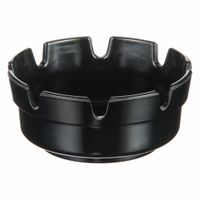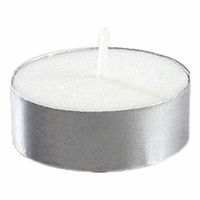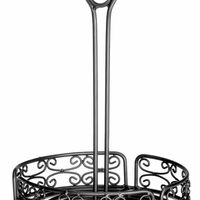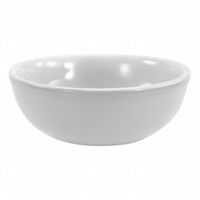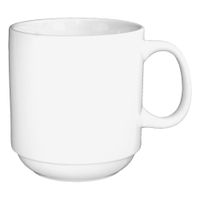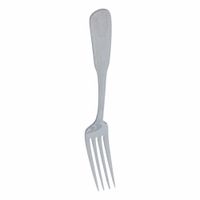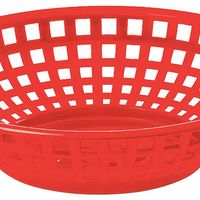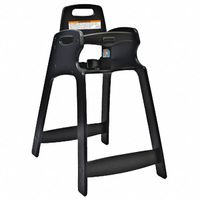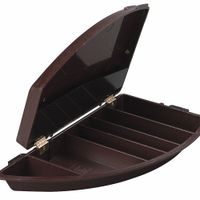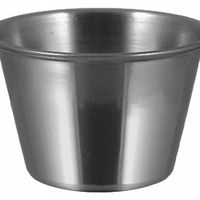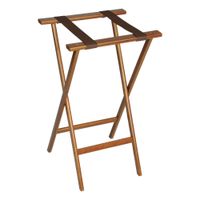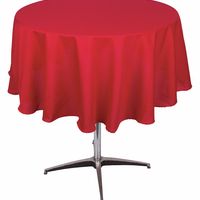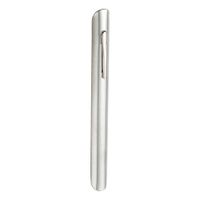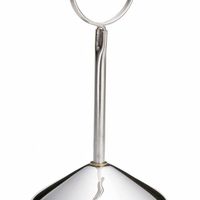Call +(254) 703 030 000 / 751 483 999 / 721 704 777
- Home
- Furnishings Appliances Hospitality
- Tableware Smallwares Food Service Storage Transport
- Tableware Service Supplies
Frequently Asked Questions
What are the essential types of tableware needed for a formal dinner?
For a formal dinner, essential tableware includes:
1. **Dinner Plates**: The main plate for the entrée, typically placed at the center of each setting.
2. **Salad Plates**: Smaller plates for salad, placed on top of the dinner plate or to the left if served separately.
3. **Bread and Butter Plates**: Small plates placed above the forks on the left side for bread and butter.
4. **Soup Bowls**: Used for serving soup, placed on top of the salad plate or separately if served first.
5. **Charger Plates**: Decorative base plates that remain on the table throughout the meal, under the dinner plate.
6. **Cutlery**: Includes dinner forks, salad forks, dinner knives, fish knives, soup spoons, and dessert spoons. Arranged in the order of use from the outside in.
7. **Glassware**: Includes water glasses, red wine glasses, white wine glasses, and champagne flutes, placed above the knives.
8. **Napkins**: Cloth napkins, often folded elegantly, placed on the dinner plate or to the left of the forks.
9. **Serving Platters and Bowls**: For presenting and serving food, placed on the table or sideboard.
10. **Gravy Boats and Sauce Dishes**: For serving sauces and gravies, often with a matching underplate.
11. **Salt and Pepper Shakers**: Placed within easy reach of guests.
12. **Butter Dishes**: With a small butter knife, placed near the bread and butter plates.
13. **Coffee Cups and Saucers**: For serving coffee or tea after the meal, placed above the knives and spoons.
14. **Dessert Plates**: Smaller plates for serving dessert, brought out with the dessert course.
These items collectively create a cohesive and elegant dining experience, ensuring each course is served with the appropriate tableware.
How do I choose the right tableware for my restaurant?
1. **Concept and Theme**: Align tableware with your restaurant's concept. For a fine dining experience, opt for elegant, high-quality porcelain or bone china. Casual eateries might choose durable stoneware or melamine.
2. **Durability and Material**: Consider the material's durability. Porcelain and bone china are elegant but can be fragile. Stoneware is sturdy, while melamine is shatterproof and ideal for high-traffic areas.
3. **Budget**: Balance quality with cost. Invest in durable pieces to reduce long-term replacement costs. Consider bulk purchasing for discounts.
4. **Functionality**: Ensure tableware is practical for your menu. Choose sizes and shapes that complement your dishes and fit your serving style.
5. **Aesthetics**: Select colors and designs that enhance food presentation. Neutral tones are versatile, while bold colors can make a statement.
6. **Storage and Space**: Ensure you have adequate storage for your tableware. Stackable designs can save space.
7. **Ease of Maintenance**: Choose dishwasher-safe and stain-resistant options for easy cleaning and maintenance.
8. **Supplier Reputation**: Purchase from reputable suppliers known for quality and reliability. Check reviews and ask for samples.
9. **Customer Experience**: Consider how tableware affects the dining experience. Comfortable, well-balanced pieces enhance customer satisfaction.
10. **Sustainability**: Opt for eco-friendly materials if sustainability is a priority. Biodegradable or recycled options can appeal to environmentally conscious diners.
11. **Trends and Innovation**: Stay updated with industry trends. Innovative designs can set your restaurant apart.
12. **Feedback and Testing**: Test samples in your restaurant setting. Gather feedback from staff and customers to ensure the tableware meets your needs.
What materials are best for durable and elegant tableware?
For durable and elegant tableware, several materials stand out:
1. **Porcelain**: Known for its strength and translucence, porcelain is a type of ceramic that is fired at high temperatures. It is chip-resistant and can withstand daily use, making it ideal for both casual and formal settings. Its smooth, white surface provides an elegant backdrop for food presentation.
2. **Bone China**: A subset of porcelain, bone china is made with bone ash, which gives it a unique translucency and whiteness. It is highly durable and resistant to chipping, while also being lightweight and refined, making it a popular choice for high-end tableware.
3. **Stoneware**: This ceramic material is fired at a lower temperature than porcelain, resulting in a denser, more opaque finish. Stoneware is highly durable and resistant to scratches and chips. It often features a more rustic, earthy aesthetic, suitable for both everyday use and casual dining.
4. **Glass**: Tempered glass is a durable option for tableware, offering a sleek and modern look. It is resistant to thermal shock, making it safe for use in ovens and microwaves. Glass tableware can be clear or colored, providing versatility in design.
5. **Stainless Steel**: For flatware, stainless steel is the preferred choice due to its strength, resistance to rust and corrosion, and ease of maintenance. It offers a polished, modern appearance and is available in various grades, with 18/10 stainless steel being the most durable and lustrous.
6. **Melamine**: A durable, lightweight plastic, melamine is ideal for outdoor dining and casual settings. It is shatterproof and available in a wide range of colors and patterns, though it lacks the elegance of ceramic or glass.
These materials combine durability with aesthetic appeal, making them excellent choices for elegant tableware.
How should I properly care for and maintain my tableware?
To properly care for and maintain your tableware, follow these guidelines:
1. **Cleaning**: Hand wash delicate items like fine china, crystal, and silverware using mild detergent and warm water. Avoid abrasive sponges or harsh chemicals. For dishwasher-safe items, use a gentle cycle and avoid overcrowding.
2. **Drying**: Air dry tableware on a rack or use a soft, lint-free cloth. Avoid stacking wet items to prevent scratches and water spots.
3. **Storage**: Store tableware in a dry, cool place. Use felt or cloth liners between stacked plates to prevent chipping. For silverware, use anti-tarnish strips or cloths.
4. **Handling**: Handle with care, especially fragile items. Avoid sudden temperature changes, which can cause cracking or warping.
5. **Polishing**: Regularly polish silverware with a non-abrasive silver polish to maintain shine and prevent tarnish. For stainless steel, use a microfiber cloth to remove fingerprints and smudges.
6. **Inspection**: Regularly inspect for chips, cracks, or stains. Address issues promptly to prevent further damage.
7. **Special Care**: For wooden tableware, apply food-safe mineral oil periodically to prevent drying and cracking. Avoid soaking in water.
8. **Avoiding Damage**: Do not use tableware in the microwave or oven unless specified as safe. Avoid using metal utensils on non-stick or delicate surfaces.
9. **Seasonal Care**: For items used infrequently, inspect and clean before use. Ensure they are stored properly to avoid dust and damage.
By following these steps, you can extend the life of your tableware and keep it looking its best.
What are the latest trends in tableware design?
The latest trends in tableware design emphasize sustainability, minimalism, and personalization. Designers are increasingly using eco-friendly materials like bamboo, recycled glass, and biodegradable plastics to create tableware that reduces environmental impact. This shift towards sustainability is also reflected in the use of natural, earthy tones and organic shapes that mimic the imperfections found in nature.
Minimalism continues to be a dominant trend, with clean lines and simple, understated designs that focus on functionality. This trend often features monochromatic color schemes or subtle contrasts, allowing the food to take center stage. Matte finishes and textured surfaces are popular, adding a tactile element to the dining experience.
Personalization is another key trend, with consumers seeking unique, bespoke pieces that reflect their individual style. This has led to a rise in handcrafted tableware, where artisans create one-of-a-kind items with intricate details and custom designs. Mix-and-match tableware sets are also gaining popularity, allowing for a more eclectic and personalized table setting.
Technology is playing a role in tableware design as well, with smart tableware that integrates digital features like temperature control and connectivity to smart home systems. These innovations enhance the dining experience by offering convenience and precision.
Finally, there is a growing interest in cultural influences, with designs inspired by global traditions and craftsmanship. This trend celebrates diversity and brings a rich variety of patterns, colors, and techniques to the table, offering a more vibrant and inclusive dining experience.
How can I ensure my tableware is safe and non-toxic?
To ensure your tableware is safe and non-toxic, follow these guidelines:
1. **Material Selection**: Choose tableware made from safe materials like stainless steel, glass, porcelain, or high-quality ceramics. Avoid plastic, especially those not labeled BPA-free, as they can leach harmful chemicals.
2. **Lead and Cadmium Testing**: Ensure ceramics and glassware are labeled as lead-free and cadmium-free. These toxic metals can leach into food, especially with acidic or hot contents.
3. **Food-Safe Certification**: Look for tableware that is certified food-safe by reputable organizations. This ensures the materials and coatings used are non-toxic and suitable for food contact.
4. **Avoid Non-Stick Coatings**: Be cautious with non-stick coatings, as they can release toxic fumes when overheated. Opt for alternatives like cast iron or stainless steel.
5. **Check for Labels**: Look for labels indicating the tableware is microwave-safe, dishwasher-safe, and oven-safe, which often implies they are made from durable, non-toxic materials.
6. **Inspect for Damage**: Regularly check for chips, cracks, or scratches, especially in ceramics and glassware, as these can harbor bacteria or lead to leaching of harmful substances.
7. **Research Brands**: Choose reputable brands known for quality and safety standards. Read reviews and check for any recalls or safety warnings.
8. **Avoid Vintage or Imported Items**: Be cautious with vintage or imported tableware, as they may not meet current safety standards and could contain harmful substances.
9. **Proper Use and Care**: Follow manufacturer instructions for use and care to maintain the integrity of the tableware and prevent the release of toxins.
10. **Regular Updates**: Stay informed about the latest safety standards and research on tableware materials to ensure ongoing safety.
What are the best practices for setting a table for different occasions?
1. **Casual Dining:**
- **Tablecloth/Placemat:** Use a simple tablecloth or placemats.
- **Dinnerware:** Place a dinner plate in the center, with a salad plate on top if needed.
- **Flatware:** Fork on the left, knife and spoon on the right. Knife blade facing the plate.
- **Glassware:** Water glass above the knife, wine glass to the right.
- **Napkin:** Place to the left of the fork or on the plate.
2. **Formal Dining:**
- **Tablecloth:** Use a high-quality, ironed tablecloth.
- **Dinnerware:** Charger plate at the center, with soup bowl or salad plate on top.
- **Flatware:** Arrange from outside in, based on usage order. Forks on the left, knives and spoons on the right.
- **Glassware:** Water glass above the knife, white wine glass to the right, red wine glass above.
- **Napkin:** Folded elegantly on the charger or to the left of the forks.
- **Bread Plate:** Above the forks with a butter knife.
3. **Buffet Style:**
- **Tablecloth/Runner:** Use a tablecloth or runner for aesthetics.
- **Dinnerware:** Stack plates at the beginning of the buffet line.
- **Flatware:** Place at the end of the line or roll in napkins.
- **Glassware:** Set on a separate table or at the end of the line.
- **Napkin:** Provide at the end of the line or with flatware.
4. **Outdoor Picnic:**
- **Tablecloth:** Use a durable, easy-to-clean cloth.
- **Dinnerware:** Opt for reusable or eco-friendly disposables.
- **Flatware:** Provide in a container for easy access.
- **Glassware:** Use sturdy, non-breakable options.
- **Napkin:** Use cloth or sturdy paper napkins.
5. **Tea Party:**
- **Tablecloth:** Use a lace or floral tablecloth.
- **Dinnerware:** Small plates for snacks, teacups, and saucers.
- **Flatware:** Small fork and spoon for desserts.
- **Glassware:** Teacups and a water glass.
- **Napkin:** Small, elegant napkins beside the plate.
